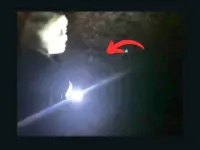4. All Prehistoric Reptiles Were Dinosaurs

This might come as a surprise but there were no flying dinosaurs nor were there any that swam. Dinosaurs only represent about 10% of the 40 types of reptiles that existed during the Mesozoic period. There were plenty of aquatic reptiles, including plesiosaurs and Attenborosaurus named after famous naturalist Sir David Attenborough.
Non-avian, flying reptiles belong to a group called Pterosaurs which include the famous pterodactylus and Quetzalcoatlus the largest known flying animal of all time.
3. They Were Cold Blooded

For many years scientists believed dinosaurs to be cold blooded like reptiles, then some research suggested that they many have been warm blooded like mammals. However, recent studies suggest that dinosaurs may have been mesotherms, which means they couldn’t control their temperature as well as mammals but weren’t completely cold-blooded like reptiles – they were a hybrid of the two.
2. Stegosaurus Battled it Out with T-Rex

Despite the inner-child in us all wanting this to be true sadly it just isn’t. Not all dinosaurs existed at the same time. Throughout the Mesozoic era many species of dinosaur came and went. In fact, the period of time between Tyrannosaurus and Stegosaurus is greater than the time between Tyrannosaurus and your parents!
1. An Asteroid Was the Only Reason Dinosaurs Went Extinct

This one’s still up for debate. A deep sea drill off the coast of Florida a number of years ago gave strong evidence that an asteroid did hit earth at the end of the Cretaceous period. This would have had catastrophic consequences around the world. All dinosaurs in the vicinity of the impact zone most likely died immediately, as there is no evidence that non-avian dinosaurs survived past this time period. Massive dust clouds would have formed possibly cooling the earth for months or even years. Tsunamis would have caused havoc along major coastlines and acid rain may have poured down. However, many paleontologists believe that dinosaur numbers were already dwindling before the asteroid hit. Some scientists speculate that falling sea levels and volcanic eruptions took their toll on the dinosaur population and it was the asteroid that finally sealed their fate.






